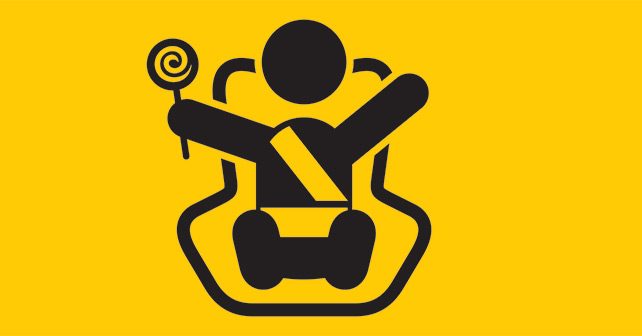
The AAUI President has an important message to keep your children safe in the event of a crash.
It goes without saying that we’d all like our children to survive a crash. However, you’re not really giving them a fighting chance if you choose to hold them in your arms when travelling in a car.
In India, we motorists lack the concept and discipline of securing our children in car seats. Infants and children have a relatively fragile skull and heavy head. As a result, they’re likely to suffer serious head injuries even in low speed crashes. Regardless of their weight, children below four years of age must be secured in a child safety seat before riding in a vehicle. This safety precaution should be exercised to match the high-tech cars now on our roads, which have far greater acceleration power than ever before.
How many of us use the seat belts provided for our safety? The motor vehicle rules, though not rigorously enforced, do require motorists to use seat belts. In many countries it’s compulsory by law for passengers to wear seat belts – even when travelling in the rear seat. If a rear seat belt is provided, it must also be used to buckle up a child seated in the rear. In a collision at 50km/h, an unsecured seven-kilogram baby in the rear seat may be violently propelled towards the dashboard, or through the windscreen, with a force of 400kgs – which is equal to a force similar to that of falling from a three-story building.
And if you think that on the highway your children are safe in the back seat you’re sadly mistaken. Moreover, a child held by a belted adult in the rear seat still remains unprotected. The adult may not be able to hold onto the unbuckled child due to the force generated by a collision. The chances of a child being crushed from being flung forward cannot be ruled out. A properly fitted child restraint system will reduce the potential for fatal injuries by up to 75%, and serious injuries by up to 67%.
A major reason we cite for negligence is that restraining a child can be quite a task. An Indian child tends to put up a fight because he or she is not used to being strapped in – especially since our children don’t find their parents wearing seatbelts. To handle the problem one must start early with an infant. The child might cry when separated from the mother, but will quickly get used to having his or her own seat in the car.
Try to ease infants into this new experience by diverting their attention to things that might be of interest to them. Buckling up, then, becomes a matter of habit as the child grows older – though you shouldn’t be surprised if a child refuses to oblige you occasionally. Young children in the age group of two to four are often active and want freedom to move about in the vehicle. So provide a diversion by way of a toy or picture book if need be. It’s a common mistake to assume that children will be entertained by the journey. Because children’s attention spans are shorter than adults, they need more stops while travelling on a long journey. If you, as an adult, use the seat belt regularly it will have a psychological impact on the mind of a child who will begin to realize the important to belt up in a car.
Here are a few closing tips – install an ‘approved’ child seat with wide straps in the rear bench of your car. Never put a rearward facing restraint in the front seat of a car fitted with a passenger side Airbag. In an accident, the Airbag will deploy and hit the back of the restraint with such force that the child may sustain serious injuries. In the event of an accident, the child seat must be replaced.
Do this and your most precious cargo
will likely be safe and sound in the event of a crash.
T.K. Malhotra is the President of the Automobile Association of Upper India (AAUI).























Write your Comment